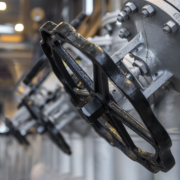FAQ – Sampling and analysis of thermal oil
Sampling and analysis of thermal oil – How to act best?
In this FAQ area, you will find some general questions and answers on and around the topic of sampling of thermal oil, how to do it correctly, and which values are important for your thermal oil system.
When is it necessary to take samples of the thermal oil?
The regular examination of samples taken from the heat transfer medium circuit is an important precondition for the safe operation of a heat transfer system and BetrSichV (Annex 2) (German industrial safety regulation) requires an analysis at least once a year.
However, reliable statements can be made only then when the samples have been taken properly, representatively, and exactly. This requires the compliance with DIN 4754-1.
Back to Index
How to take a representative and exact sample and why is this so important?
For the analysis it is very important to receive a representative and exact sample from the main flow.
The sample from the main flow is often taken during the normal operation of the system. Therefore, the oil is very hot. . From a hot sample however, the low-boiling components escape provided the sample contacts the atmosphere. The sample will then include less low-boiling components and in a following examination the heat transfer oil will appear better than it really is.
Therefore, the sample must be taken in a way that it contacts the ambient air until it has cooled down enough.
Back to Index
How do I take such a sample correctly?
For this purpose, the sample must be taken from the hot, flowing medium in a characteristic point.
A sample cooler – like the one made by NESS – is a heat exchanger in which the medium flows through a stainless-steel spiral tube which is in a jacket filled with cooling water. This ensures that the sample is not taken under open or hot conditions.
Back to Index
What happens with the taken sample?
Among others, the thermal oil sample is then examined by us for the three most important factors that are decisive for a good oil quality. These include flashpoint, acid figure, and Conradson value.
The indicators from analyses and a corresponding recommendation for acting – if advisable – will finally be communicated to you. On demand, our experts will contact you in person to work out an individual concept for further proceeding with the objective to increase safety, availability, long lifetime, and efficiency of your thermal oil system.
If you need any help with taking samples and analysing of your thermal oil, certainly we will be at your disposal as usual.

Back to Index
Other FAQ topics that might interest you
NESS NPK40
Sample Cooler NPK40 for
taking samples of thermal oil











